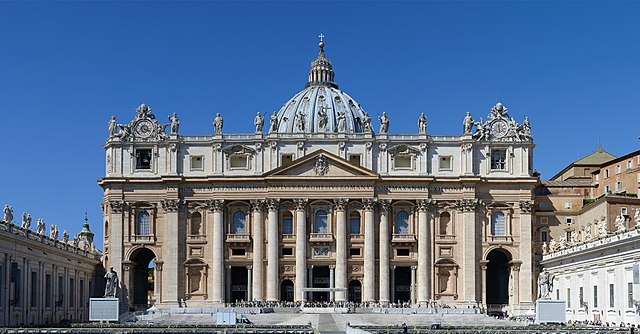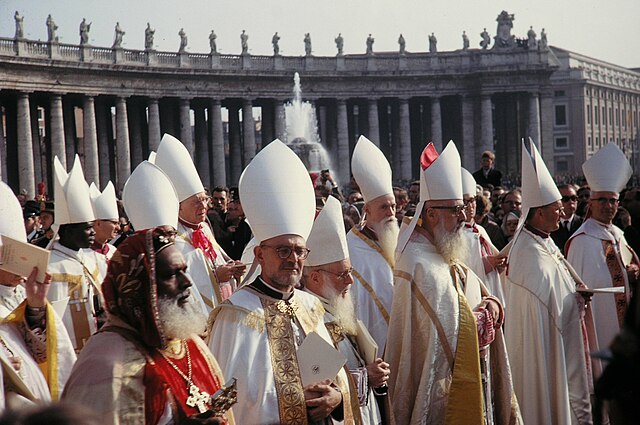The Chair of Saint Peter, also known as the Throne of Saint Peter, is a relic conserved in St. Peter's Basilica in Vatican City, the sovereign enclave of the Pope inside Rome, Italy. The relic is a wooden throne that tradition claims belonged to the Apostle Saint Peter, the leader of the Early Christians in Rome and first Pope, and which he used as Bishop of Rome. The relic is enclosed in a sculpted gilt bronze casing designed by Gian Lorenzo Bernini and constructed between 1647 and 1653. In 2012, Pope Benedict XVI described the chair as "a symbol of the special mission of Peter and his Successors to tend Christ's flock, keeping it united in faith and in charity."
Chair of Saint Peter
The Pope's throne in St. Peter's Basilica, Vatican City, last publicly exposed in 1867. (From Wood Carvings in English Churches, 1910)
The Papal Basilica of Saint Peter in the Vatican, or simply Saint Peter's Basilica, is a church of the Italian High Renaissance located in Vatican City, an independent microstate enclaved within the city of Rome, Italy. It was initially planned in the 15th century by Pope Nicholas V and then Pope Julius II to replace the ageing Old St. Peter's Basilica, which was built in the fourth century by Roman emperor Constantine the Great. Construction of the present basilica began on 18 April 1506 and was completed on 18 November 1626.
Main façade and dome of St. Peter's Basilica, seen from St. Peter's Square
View from the Tiber on Ponte Sant'Angelo and the Basilica. The iconic dome dominates the skyline of Rome.
Panorama of St. Peter's Square
Bishops at the Second Vatican Council in 1962






